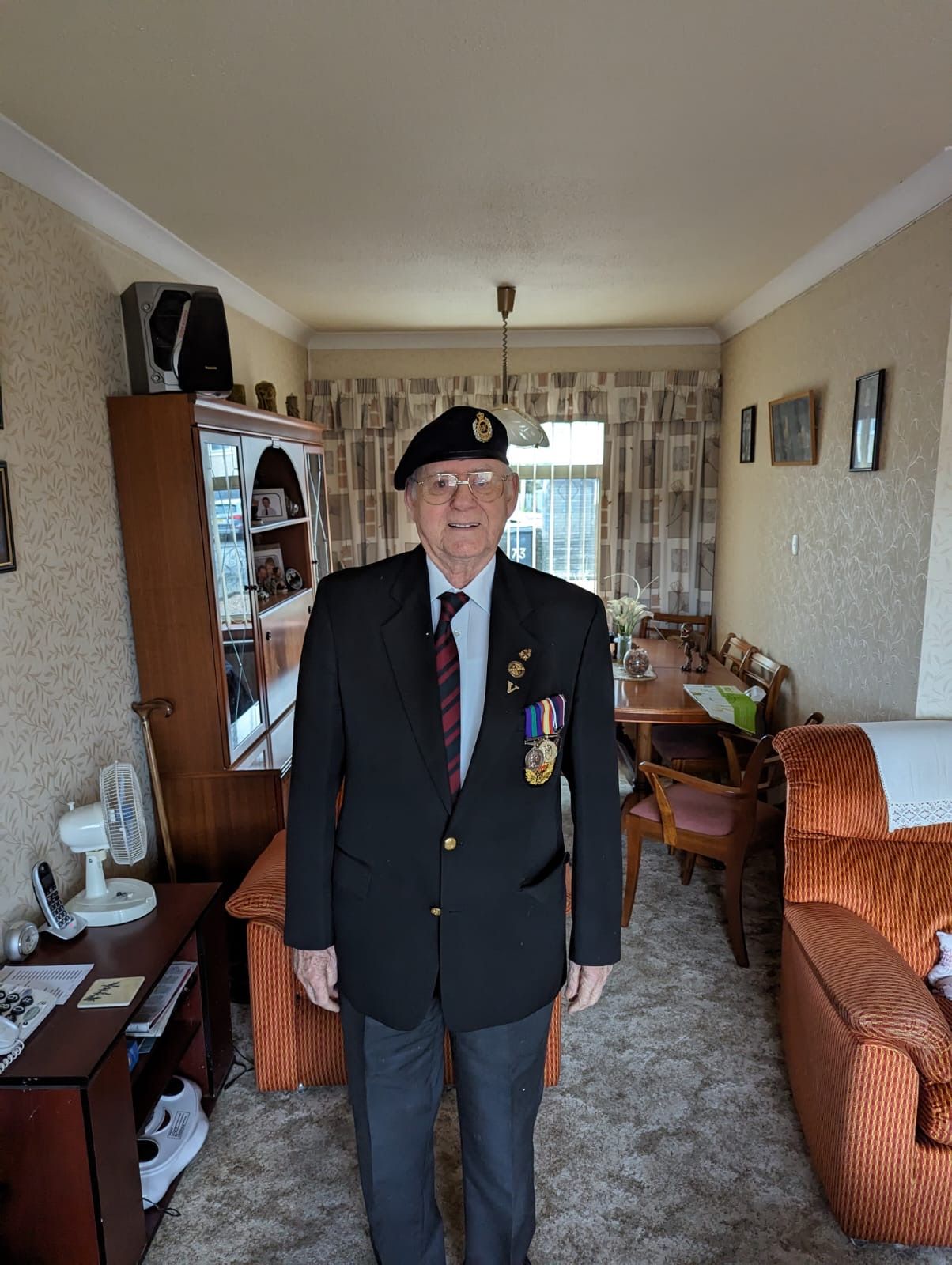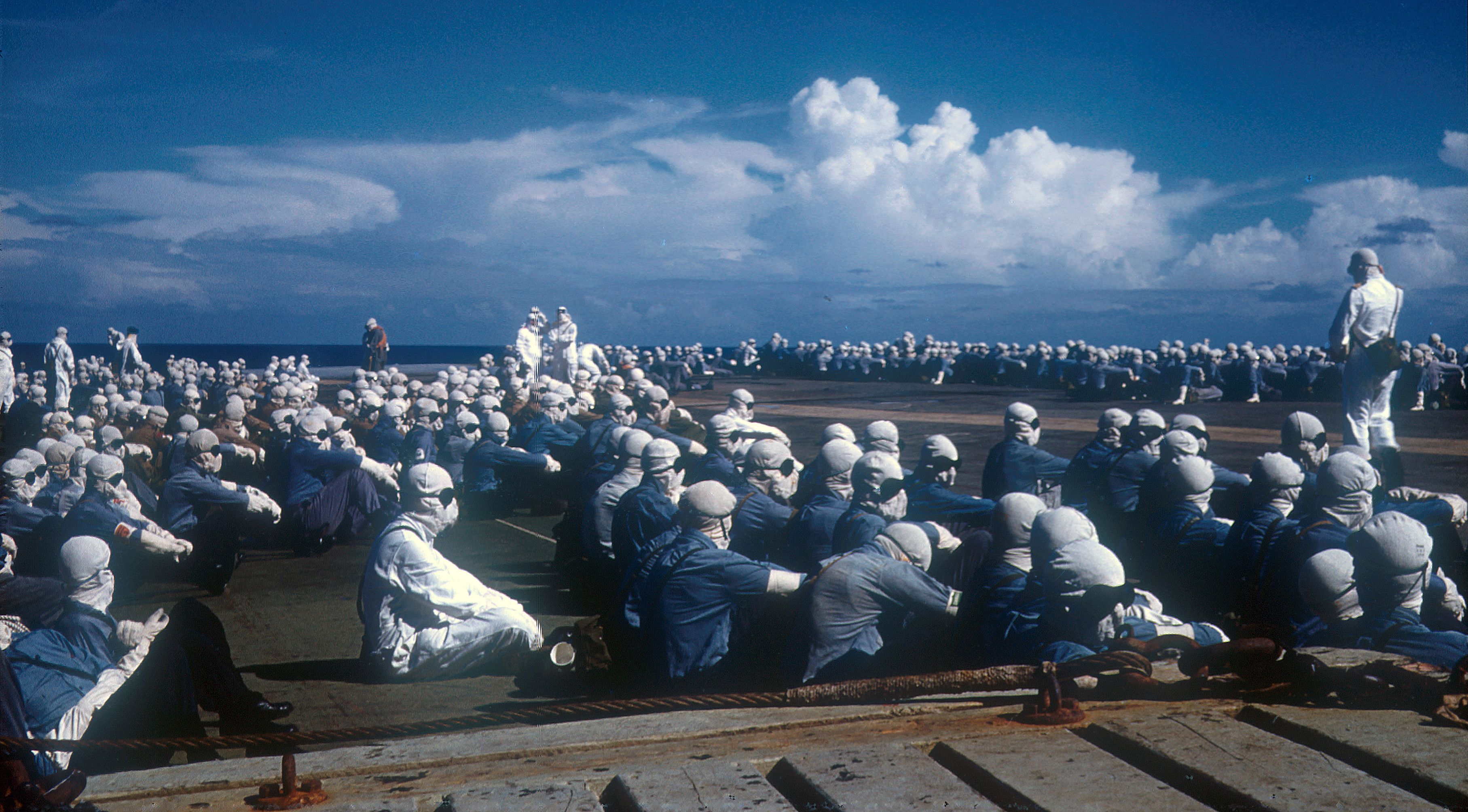
David ‘Dave’ Whyte was born in Montrose, Angus, in 1936. He left school at 15 and briefly worked as a miner before joining boy service in the Army. After completing his boy service at the Army Apprentice School in Harrogate and the Trade Centre at Chatham, Whyte was posted to Osnabrück in Germany with the Royal Engineers. He was later sent to Christmas Island for Operation Grapple. Here, Whyte worked as a forklift operator and drove a road roller to ground zero for several weeks following a Grapple detonation. Upon returning home, Whyte volunteered for a posting in Aden in Yemen. He purchased his discharge from the Army in 1961 and enlisted in the Royal Air Force in 1967, staying for 12 years. He later joined the prison service and then worked for Fife Council on security before retiring at 65. He has been involved in nuclear test veteran campaigning since the 1980s. He currently lives in Kirkcaldy, Fife.
Interview extracts
Description
While discussing his experiences at Operation Grapple Z, David Whyte describes entering the forward area, working with heavy machinery, and clearing up radioactive debris. The memory of this work is extremely important to Whyte and has informed his fight for compensation and recognition.
The image shows photographer John L Stanier wearing protective clothing, Whyte had no such protection while working on Christmas Island.
This is a short extract from an in-depth interview. David Whyte was recorded for the Oral History of British Nuclear Test Veterans project in 2024. The interviewer was Joshua Bushen. This project was run in partnership with National Life Stories and the full interview can be accessed at the British Library.
Transcript
I then drove into Ground Zero and picked up all the radioactive debris. There was probably, I would say probably about a stone in weight of debris that I had to put in the truck.
So, was it just you in this truck then?
It was just me, yeah. I was the only one that I could see in the area. The other members of my party had been given a separate area. What their jobs were, I don’t know. I think they were probably much the same as mine, pick up the debris. It makes me wonder why debris was there, but when you think of the bomb, it explodes in a 360-degree circle, you’ve got stuff that is shot up into the air, into the cold atmosphere, that comes down and lands. Whereas the stuff that comes down from the bottom is heated and is vaporised. So this is why there is some debris left. So, as I say, I picked up the debris and put it into the truck and drove down to Ground Zero. Now, I should add at this time that I was not given any protective clothing or respirator. All I had was my radiation film badge and my QFE dosimeter. And so I got down and I put the truck in its parking bay, and then I noticed an AWRE chap coming out, in full protective clothing, wearing a respirator, and he jumped in my truck to drive it away to empty it. I went into the decontamination tent and there was a serviceman – he wasn’t Royal Engineers – he was taking the radiation film badges. He took it and he wrote something on a piece of paper. I’ve a funny feeling it was probably the time, because they need to know how long you were in Ground Zero for. He put it in a box on the table, and there was quite a few badges in there. So I left him and I went round to another serviceman, again, not Engineers, and he took my dosimeter from me. And he read it, and it was reading five roentgens, which was fifty millisieverts. And he wrote that down on a piece of paper, and I went round, and they ran a Geiger counter up and down me to see if I was okay, and everything was there. So that was it.
[ends at 0:02:21]

John L Stanier at Maralinga in protective clothing showing a camera also protected in a special plastic cover. Photo: National Archives of Australia. Public domain, via Wikimedia Commons. Public domain, via Wikimedia Commons.
Description
David Whyte was posted to Christmas Island for Operation Grapple. As well as other jobs, he drove a heavy road roller to ground zero for several weeks following the Grapple Z series. In this recollection, he talks about the death of Derek Redmond, a fellow serviceman, on Christmas Island. Redmond was doing similar work to Whyte before he passed away. The fact that a decision was made to bury Redmond at sea made many veterans suspicious about his cause of death. Whyte has been involved in nuclear test veteran campaigning since the 1980s.
This is a short extract from an in-depth interview. David Whyte was recorded for the Oral History of British Nuclear Test Veterans project in 2024. The interviewer was Joshua Bushen. This project was run in partnership with National Life Stories and the full interview can be accessed at the British Library.
Transcript
There was a driver with us, Derek Redman, he was a lance corporal, and his job was to take the boffins down to the Ground Zero to examine where the bomb was exploded, or near where the bomb was exploded. Now, he didn’t only just drive one lot down, he’d take one down, take them back, and he’d have another lot to take down. Now, he did this fairly regularly for a good few days, and there was one morning, he turned round and says to the chap in his tent, ‘I’m not feeling very well today, I’m not going in to work’. So the chap in his tent went and informed the sergeant major, the sergeant major went to see him, he was dead. He was to be buried the next day, well, at sea. So they had to get him prepared then, and I was picked as the firing party. And we went on board the Narvik, and went out to sea… The coffin went over the side and we fired a volley of shots.
[ends at 0:01:02]

